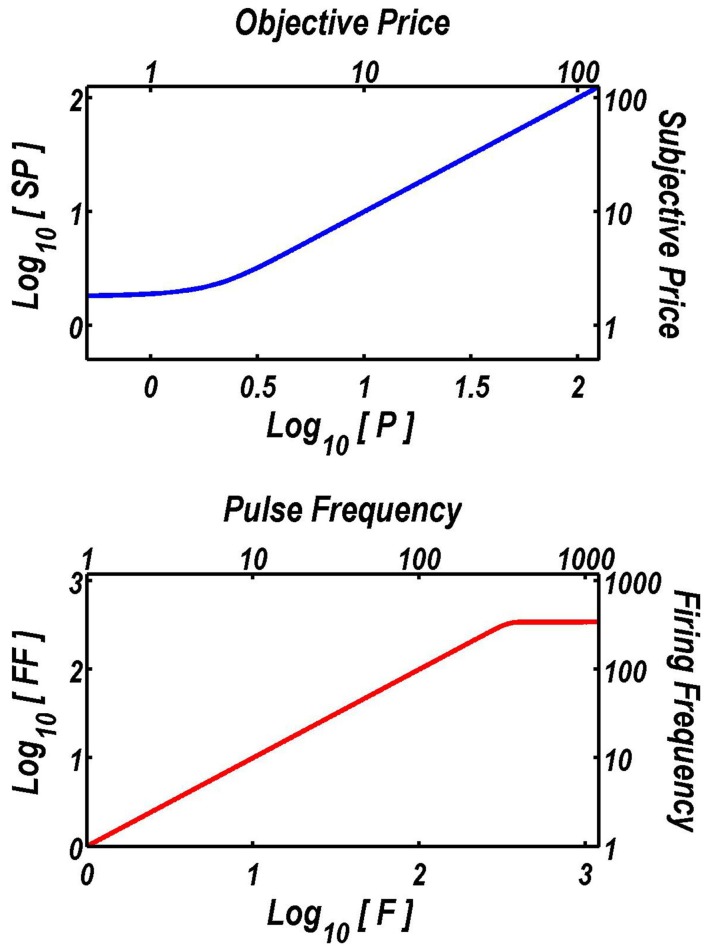Figure 1.
Extensions of the reward-mountain model. The upper graph shows the function that translates objective prices into subjective ones. The form and parameters of this “subjective-price” function are based on an experiment by Solomon et al. (2007). When prices are very low, changes in their objective value have little subjective impact. In contrast, once the price exceeds about 4 s, the subjective price converges on the objective price. The lower graph shows the function that translates the pulse frequency into the induced frequency of firing in the directly stimulated neurons subserving the rewarding effect of the electrical stimulation. The form and parameters of this “frequency-following” function are based on another experiment by Solomon et al. (2010). As long as the pulse frequency is lower than about 340 pulses per second, each stimulation pulse triggers an action potential in the directly stimulated neurons. The frequency-response function then levels off quite abruptly, and increasing the pulse frequency further has little effect.

